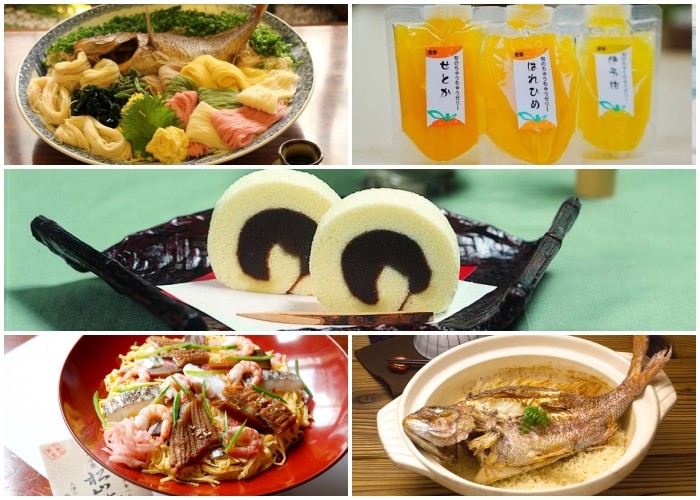
At restaurants in Matsuyama of Ehime prefecutre, an abundant variety of dishes such as dishes using fish caught from the Seto Inland Sea, fruit and traditional snacks can be eaten. Here we will introduce 5 famous dishes.
Matsuyama Sushi
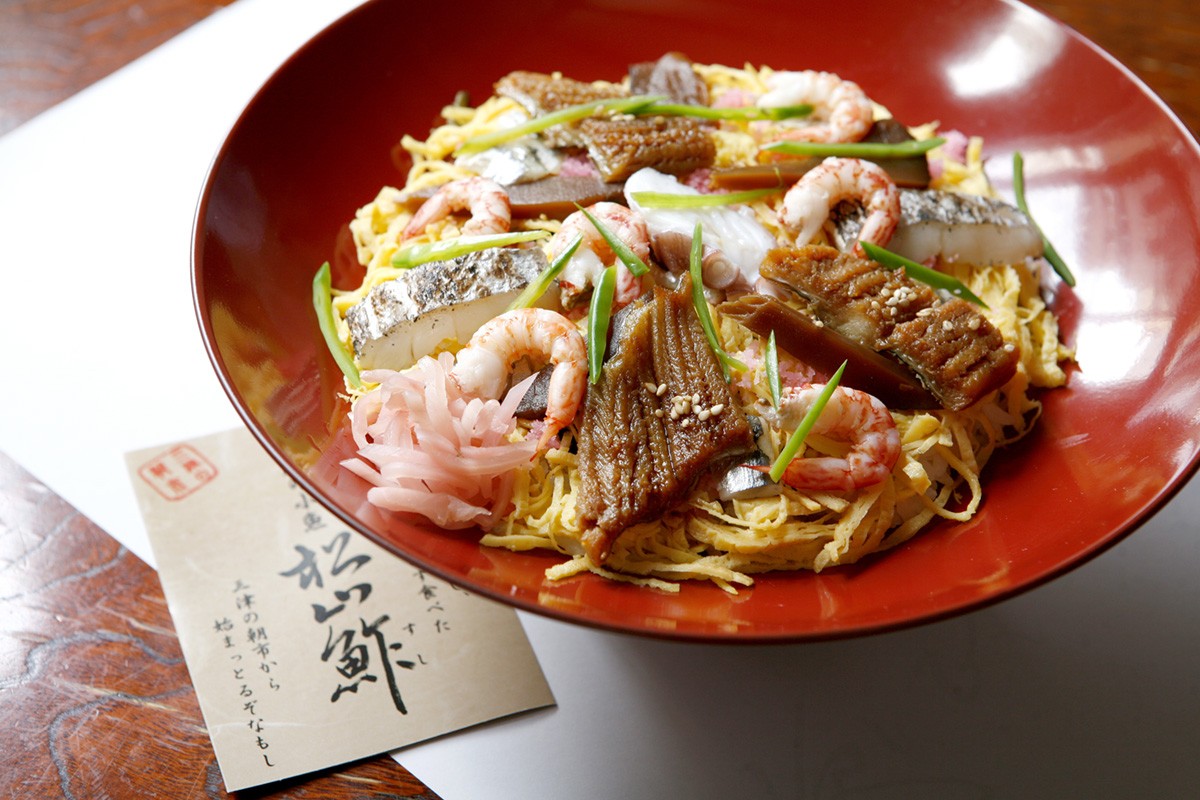
Matsuyama Sushi is a local dish that is eaten at celebrations and when served to house guests. Due to this it is often called Moburi Meshi.
First, mix sweet vinegar made with the dashi seasoning of small fish into white rice, mix in sliced conger eel and seasonal vegetables. After that, pile on Kinshitamago (thinly sliced omelet) and small seasonal fish, and the dish is complete. You’ll find yourself gazing at it once the vividly colourful appearance enters your line of sight. The flavour is packed with the sweet flavour of the vinegary rice and the taste of various ingredients.
Furthermore, There are some stores around the city that serve Matsuyama Zushi, among these restaurants such as “Nihon Ryōri Sushimaru Honten” and “Restaurant Aoigoke” in the hot spring Ryōkan (Japanese Inn) “Dōgo Onsen Funaya” are famous. Prices are around 1000 yen for one dish and a set is around 1,500 - 2,500 yen. (Information accurate August 2019).
Hōjo Taimeshi
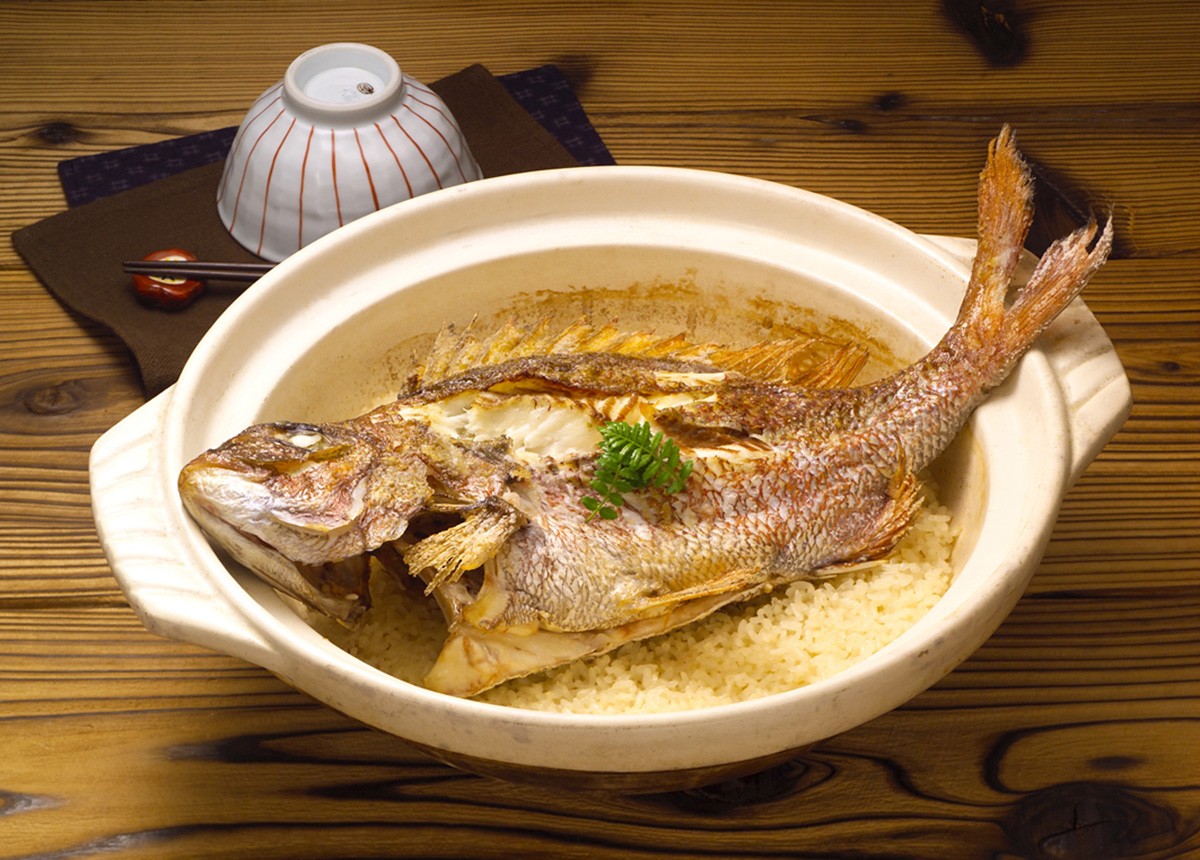
Hojo Taimeshi is a local dish from the northern part of Matsuyama city, the Hojo area. It features a simple cooking method that involves cooking a whole sea bream with rice and kelp. In addition to the salmon meat, the rice with the flavour of salmon and kelp juices is also delicious. The story of that reason that “Hojo Taimeshi” is famous as a local dish has been passed down, which says that the ancient empress ate Hojo Taimeshi and was pleased, so Taimeshi has been eaten since ancient times. Also, there are two types of Hojo Taimeshi. One Hojo Taimeshi involves cooking an entire sea bream from Matsuyama city with the rice, and the other, “Uwajima Taimeshi”, is sea bream sashimi from Uwajima laid on top of rice. In Matsuyama City, there are restaurants that offer the Taimeshi menu from both regions.
"Hojo Taimeshi" is served at stores in the Hojo area and Matsuyama city centre, and restaurants such as “Washoku Tokoro Shū” and “Matsuyama city Taimeshi Aka” are famous. the cost is reasonable starting at 1000yen for a single dish and it’s around 1,300 - 2,300 yen for a set. (Information as of August 2019).
Goshiki Somen
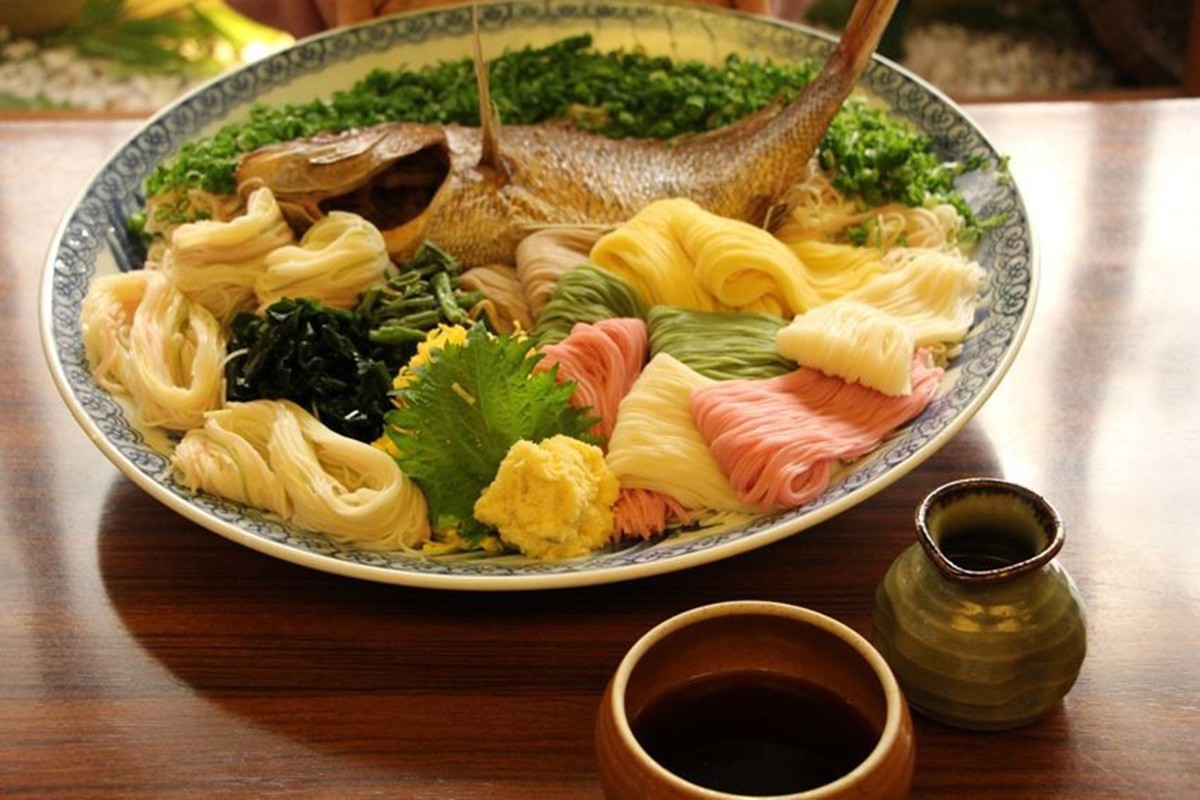
Goshiki Somen is colourful Somen in 5 colours, yellow, green, brown, red and white. It was inspired by five-coloured yarn and is a famous, historical Matsuyama product that has been manufactured since the 18th century.
Moreover, except the white noodles, it is coloured with natural ingredients such as egg, matcha, buckwheat flour and plum flesh. Furthermore, Goshiki Somen can be eaten at places such as “Kyōdo Ryōri Goshiki”, and at “Kamihayashimizu no Moto Somen Nagashi” which is open for a limited period between July and August. The budget is around 600 yen for Somen Nagashi, and around 1,300 - 2000 yen for a set. (Information as of August 2019)
Mikan or Tangerine Processed Goods
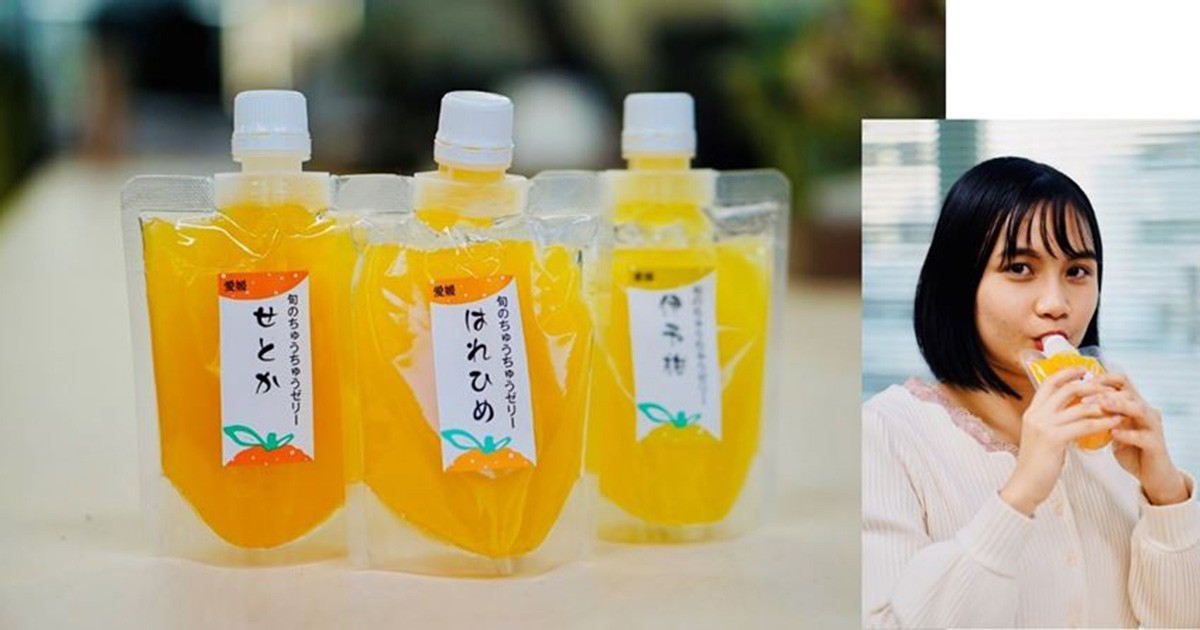
Ehime boasts one of the largest productions of mikan (Japanese tangerines) and various kinds of mikan are cultivated. This is due to the natural environment, such as the sun, the mild climate and the soil containing the salty sea breeze minerals which is suitable for mikan. In Matsuyama, mikan are actively cultivated in Nakajima island, which floats off the coast, and is famous as “mikan island”.
A wide variety of processed products made using mikan are also available. There are basic products such as canned goods and jam, and there are even unique products such as the drinkable jelly “Chū Chū Jelly”.
Furthermore, places such as “noma-noma” and “Ehime Kajitsu Kurabu Mikan no Ki” serve fresh juice using mikan and sweets for around 500yen, and you can also buy processed mikan goods as souvenirs. (Information as of August 2019)
Tart (Nonoji Tart)

Matsuyama City is famous for this Japanese confectionery called a tart, which is made from yuzu kneaded red bean paste wrapped in castella. The refreshing flavour of the yuzu, the refined sweetness of the red bean paste and the soft sponge cake go together extremely well.
A tart is a type of Western-style confectionery that a Portuguese person told the Matsuyama Daimyo, Sadayuki Matsudaira, about in the 17th century. Following that, he created a tart using Japanese sweet bean paste and it became the form it is now.
Incidentally, the sweet bean paste wrapped in the cake looks like the Hiragana character “no”, so it is also called the Nonoji tart.
Nonoji Tart is manufactured and sold at Japanese confectionery shops such as “Ichiroku Honpo” and “Rokujiya”. The price is reasonable at around 120 yen for one.
In addition, at the restaurant “Ichiroku Kusaryō” operated by “Ichiroku Honpo”, you can eat dishes such as the famous confectionery “Iroku Tart” and “Ichiroku Tart” tempura. It comes as a set with drinks or other Japanese sweets, but you can eat it for under 600 yen. (Information as of August 2019)
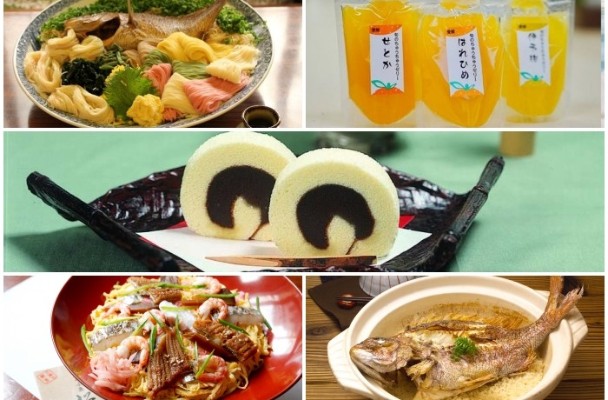

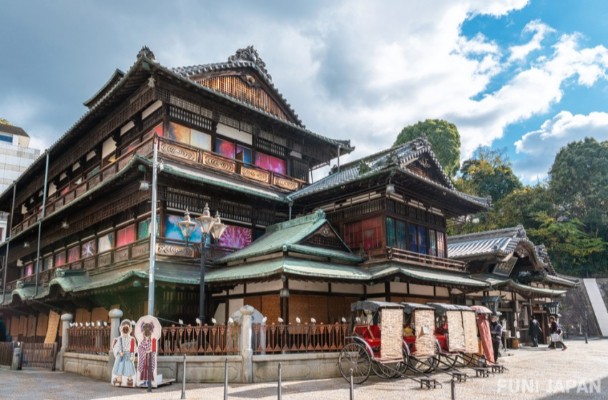
Comments